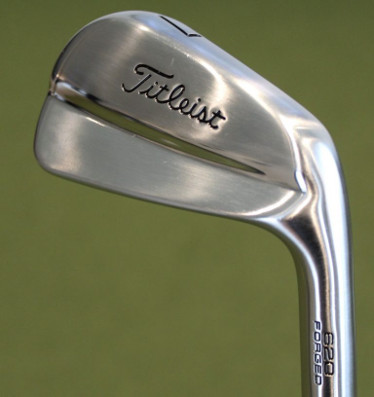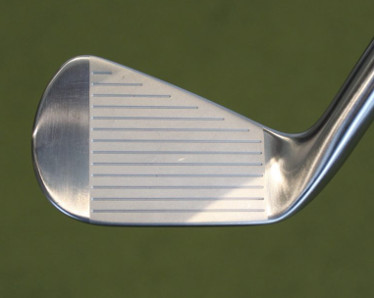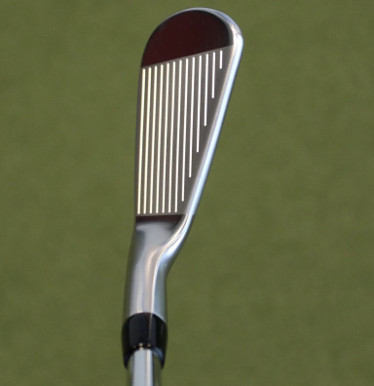
Let’s begin today’s news article with a bold statement: some golf gear needs no introduction, and this principle definitely applies to Titleist’s new 620 irons. For a long time now, the number 600 has been virtually synonymous with Titleist’s classic forgings. The new 620 irons are basically the company’s new take on classics, but with a twist: these babies are refined and aimed to please the modern golfer. Titleist’s forged irons both cavity backs and blades, have become ubiquitous into the bags of top Tour pros and elite amateurs alike, and yes, we’re talking about people passionate about golf who are seeking for the ultimate thrill in regard to shot making and feel.

The new 620 irons boast a timeless design, which brings back memories, as they’re basically homage to the legacy of one of golf’s legendary companies. To get into the meat of the article, Titleist revealed recently their latest and arguably greatest 620 MB and CB irons, and here’s what you need to know about them: first, both versions retail for $175, and they’re available with Project X shafts and Golf Pride Tour Velvet 360 shafts; if you want that “extra edge”, you can go for Mitsubishi Tensei White AM2 graphite shafts, but you’ll have to pay a little bit more: $187.50 respectively. The irons are built from forged 1025 carbon steel and the CB variant comes with tungsten weights. The new 620 MB and CB irons already hit retails stores since August 30th, and, to make a long and boring story short and sweet, let me give you an example: as that old saying goes, if you ask how much a luxury watch or a sports car costs, you probably can't afford it. The same theory applies to high end muscle back blades, let’s say, for the sake of argument (just kidding), the Titleist 620 MB. This iron comes with an old school, classic and clean look, but it’s not a jack of all trades, i.e. it’s not for the average Joe Six-pack. The thing is, if you’re asking yourself if that’s the right club for you, it probably isn’t. The same theory applies to the 620 CB iron, because, unfortunately, Titleist’s latest clubs are not built for “the masses”, but they’re aimed at elite golfers mostly, potential club champions and collegiate players, i.e. people who really look for the best in regard to feel and control. Yes, these are players’ irons by any metrics, and they’re designed to be the apple of any traditionalist’s eye, due to their simple (even minimalist) design, which is nothing short of outstanding, optics wise.

The new Titleist 620 MB irons are absolutely gorgeous from any angle, boasting a classic design, and truth be told, they feel and play exactly like they look: they’re responsive, soft, flawless, unforgiving (a design feature, not a bug) and they definitely check off each and every box a Tour pro would look for. The Titleist 620 CB irons comes with basically the same tweaks as the MB iron, but feature more “beef” so to speak for the golfer which requires some help on the battlefield. These irons are simple yet consistent, and they’re aimed at players seeking for workability (they’re truly work-horses), excellent feedback and the ability to shoot from every angle. The new 620 series from Titleist delivers better turf interaction compared to previous generations, due to the irons’ tweaked leading edge and more camber. Basically, the company learned from its past mistakes (if any) and improved an already legendary line of irons, due in most part to feedback from the world's top golfers, and crafted the most controllable and the finest blade in its history. It’s true that the new 620 irons are not the most forgiving option for average Joes, but regardless of one’s skill level, they’re definitely worth a try.

Pricing:
Steel: MAP $175 per club ($1,399/set of 8)
Graphite: MAP $187.50 per club ($1,499 /set of 8)
But wait, there’s more: Titleist also launched on August 30th their new TS2 and TS3 hybrids, to complement the 620 line-up. To begin with the most important issue for most of our readers, the new hybrids retail for $279 each, with Mitsubishi Kuro Kage Dual Core Black or Tensai AV Series Blue, Project X HZRDUS Smoke Black or Even Flow T1100 White shafts and Golf Pride Tour Velvet 360 grip. As per specs, here’s the deal: TS2: 19, 21, 23, 25 and 27 degrees; TS3: 19, 21, 23 and 25 degrees.
The new hybrids are the successors of TS2 and TS3 drivers and fairway woods released back in 2018, and they follow the same philosophy as their predecessors, i.e. they make for an incremental step in regard to delivering more speed via improvements in design/aerodynamics, and also from using thinner faces. Both hybrids are cast from high quality stainless steel and boast a highly aerodynamic chassis shape; think along the lines of the 818 Series meet the wind tunnel and graduate magna cum laude. And yes, the TS series replaces the 818 series. However, the key to improved performance in the new generation is arguably Titleist’s decision to use thinner and faster faces. According to the company, the new hybrids boasts a sixteen percent thinner face compared to their predecessors, and the end result of developing an ultra-thin club face is more flex at ball impact, which translates into ludicrous speed. Titleist also benefited from saving weight in the face and the crown, thus the R&D department was able to lower the CoG (center of gravity) in order to promote a higher launch angle.
The main difference between the TS2 and TS3 hybrids is that the former are more forgiving and larger than the latter, which means they’re excellent for players who are inclined to sweep the ball off the turf. We must mention the sole-weight located behind the leading edge, which helps with shifting the CoG forward in order to reduce spin; however all the tech talk aside, the TS3 hybrid launches lower than the TS2. The TS3 hybrid is more compact at address and it’s a great choice for players who tend to hit down on the ball. Both hybrids feature the famous 16-position SureFit adjustable hosel, which makes them great for “fine tuning” (loft and lie settings).





